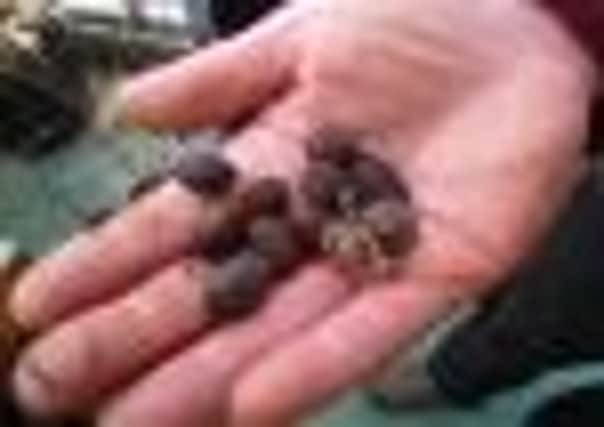Shetland hazelnuts may be first for 4,500 years


The discovery of the nuts in a cluster of hazel shrubs in a woodland on the eastern side of the Shetland mainland has astonished naturalists, who believed the climate in Britain’s most northerly islandswas too harsh for hazelnuts to grow.
Until now, the only hazelnuts on Shetland could be found in supermarkets or in fragmentary remains buried in the layers of peat set down between 4,500 and 9,000 years ago.
Advertisement
Hide AdAdvertisement
Hide AdBut 24 hazelnuts have been discovered on three out of 30 hazel shrubs which have fruited for the first time since they were planted in the late 1990s.
The plants were found by James MacKenzie, woodlands projects manager, during a routine visit to the Loch of Voe Community Woodland on the main road between Lerwick and the Sullom Voe oil terminal.
Mr MacKenzie said he had been totally dumbfounded by the discovery of the ripe hazelnuts on the stunted shrubs in the small woodland.
“These could be the first hazelnuts to have fruited on Shetland for almost 5,000 years,” he said.
Mr MacKenzie explained that Shetland had only two individual “relict” hazels – the likely remnants from the original woodlands on the islands – still growing in the wild. There was no record of the trees having ever borne fruit.
He said: “That is not surprising because they are a good distance apart and they don’t self-pollinate.”
The hazel shrubs that had borne fruit had been planted at the Loch of Voe around 1998 from seeds taken from saplings at Torridon in the north-west Highlands.
However, there had been no expectation on Shetland that any of the shrubs would ever produce nuts because of Shetland’s less than balmy temperatures, Mr MacKenzie said.
Advertisement
Hide AdAdvertisement
Hide AdHazels require an average temperature in September of 12C to set viable fruit. But Shetland has an average September temperature of only 10.5C – and last summer was not particularly warm.
It was possible, he said, that the hazels had finally fruited because of a “micro-climate” within the woodland.
“There are 30 shrubs in the woodland in a group in a fairly sheltered but reasonably sunny grove, surrounded by conifers and birch trees,” Mr McKenzie said. “It is quite amazing.”
A spokesman for Scottish Natural Heritage said: “The group has shown due vigilance and diligence in finding this, and well done to them. It is an interesting find.”